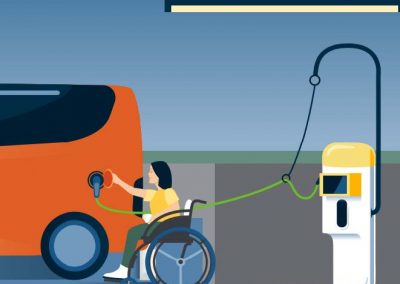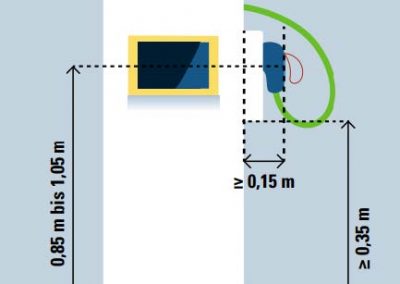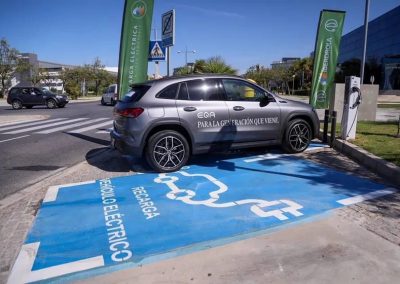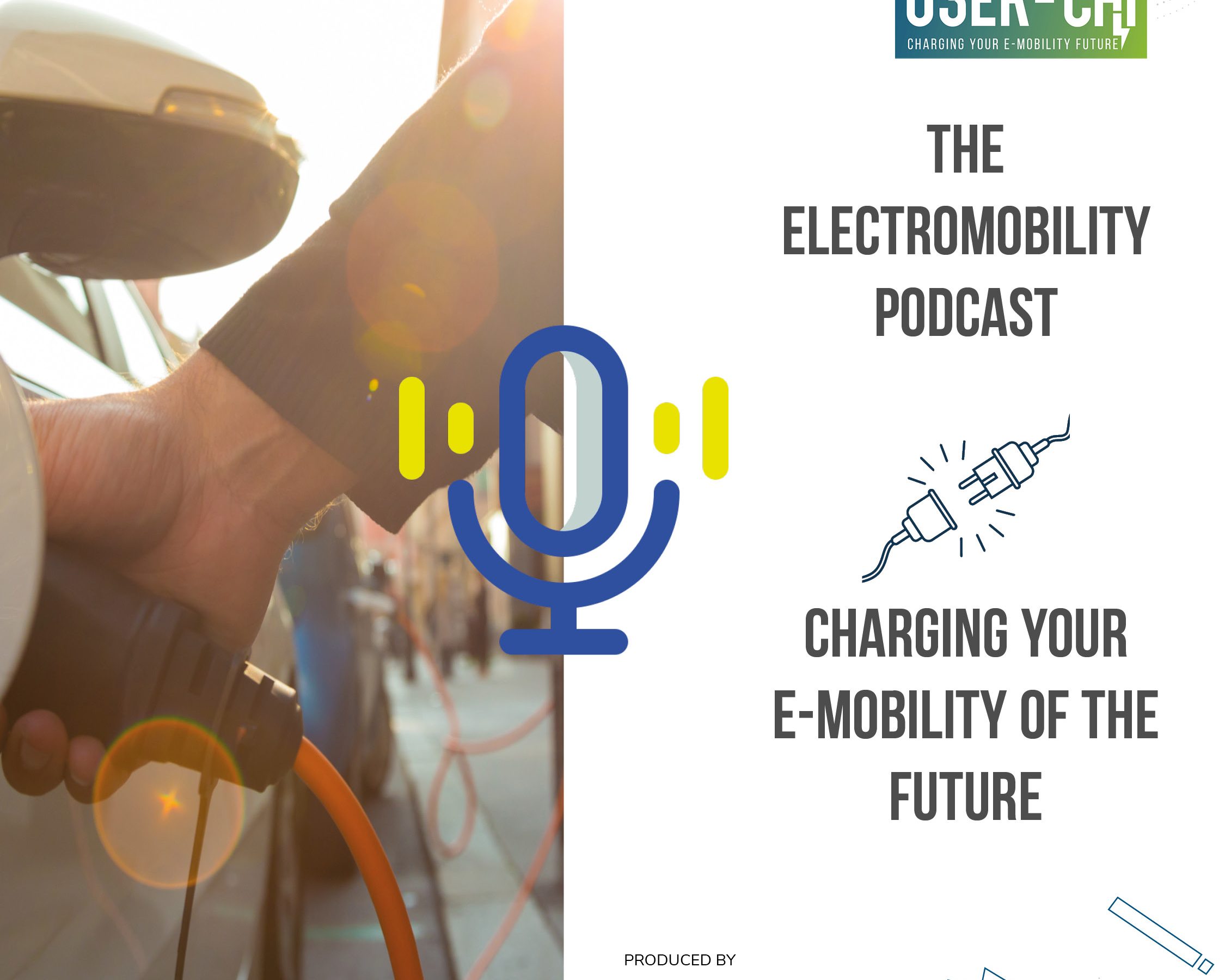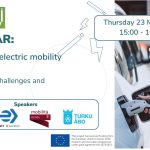Webinar on the accessibility of charging infrastructure
Are electric vehicle chargers accessible to people with disabilities and reduced mobility? Are they convenient for all users? Designing charging stations to be accessible makes a huge difference for some people while also improving the stations for everyone. Being short, colorblind, or having other impairments should not prevent a person from choosing an electric vehicle. These accessibility considerations need to be addressed at existing and future charging points to ensure that accessible charging for electric vehicles is safe for all as we accelerate towards a zero-emission future.
So, what do we need for an accessible charging infrastructure in European cities? How can we improve? What measures are currently in place, and what still needs to be done? These questions were explored in a recent webinar organized under the framework of the USER-CHI project, which provided valuable insights and solutions for creating an accessible charging infrastructure across Europe.
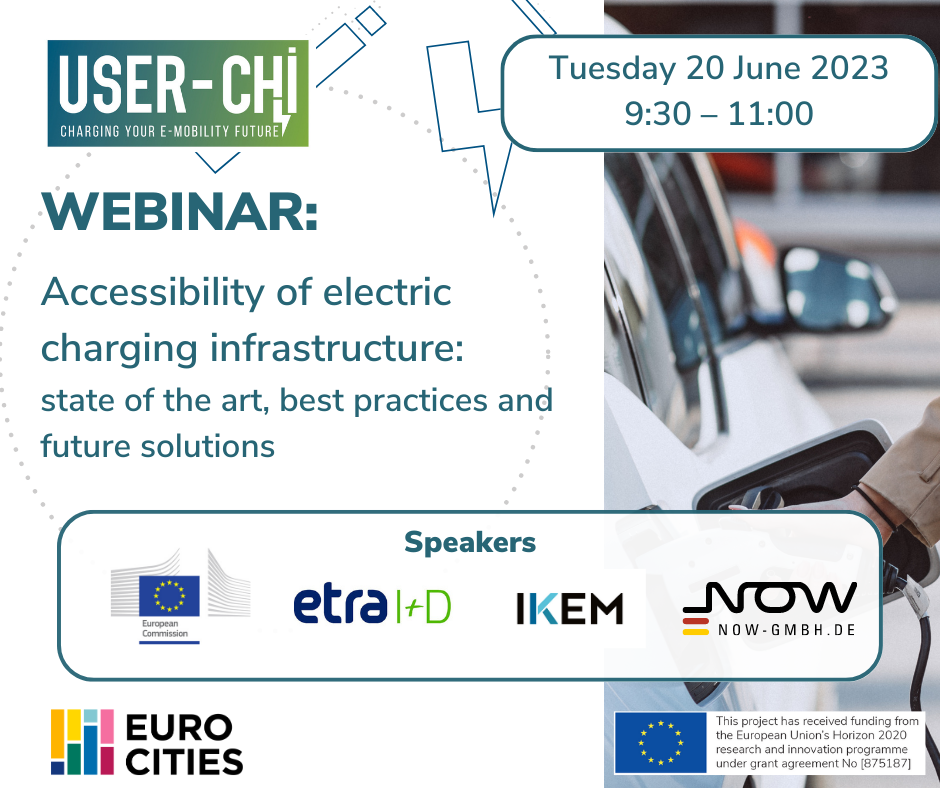
The webinar began with an introduction to the USER-CHI project by Marion Pignel from Eurocities, highlighting the importance of accessibility in this user-centric initiative. Then, Aleksandra Klenke from DG MOVE presented the work of the Sustainable Transport Forum and the Task Force on the ‘Development of Recommendations for Accessibility of Recharging Stations.’
This task force is responsible for issuing European guidelines on charging station design, including new technologies such as wireless charging, as well as guidelines for associated parking spaces, the surrounding environment, and the distribution and location of accessible recharging poles, stations, and parking spaces. A benchmarking survey conducted in early 2023 revealed key information on issues, bottlenecks, regulations, guidelines, strategies, projects, best practices, and governance frameworks related to accessible charging infrastructure. The survey identified the lack of common standards for accessible EV recharging as the main bottleneck, closely followed by the absence of a clear regulatory framework. Therefore, the work being done by EU institutions to establish a coherent regulatory framework and provide further guidelines is crucial.
The survey also shed light on ongoing discussions, such as defining standards and conducting preliminary analyses before determining the number of reserved or adapted spaces for accessible EV recharging. Should accessible EV recharging places be matched with the number of spaces designated for disabled people?
The task force will publish a final deliverable containing recommendations based on survey results and an analysis of reference documents. They will also develop additional guidelines at the EU level. These recommendations and guidelines will include a suggested percentage of existing charging stations in urban areas and an area-based indicator for urban zones.
The webinar aimed to offer concrete solutions to the discussion points. Two sets of guidelines for accessible recharging infrastructure were presented, providing tangible recommendations.
Angel Moya from ETRA I+D presented the report titled “Accessibility Criteria for Electric Vehicle Charging Points or Charging Stations” by CEAPAT. This report advocates that charging points, regardless of their location, must meet the conditions of accessibility and universal design so that anyone can use them independently, comfortably, and safely, without exclusion due to disability or age. A recent Spanish Royal Legislative Decree reinforces this notion by stating that publicly accessible charging infrastructure must provide universal accessibility.
The CEAPAT report provides recommendations for the design of the parking surface, hardware, and software to comply with these accessibility requirements.
Sebastian Lahmann from NOW GmbH, the National Centre for Charging Infrastructure, presented a second set of guidelines that focus on physically handicapped individuals and outline technical requirements for hardware and charging sites. He also introduced the concept of two-level requirements to assess the accessibility of a charging point, with Level A representing basic requirements and Level AA denoting advanced requirements.
Here are some key recommendations from the guidelines
Hardware
- Cable support
- Low position of operating elements
- Digital accessibility of charging points
- Sufficient lighting of chargers
- Tactile guidance system with floor markings
Source illustrations: Charging Infrastructure Accessibility Guide (CIAG) 1.0“ Nationale Leitstelle Ladeinfrastruktur
Parking Space
- Free area of minimum 1.5m width at the pavement and a length of the parking bay of 5m or more for parallel parking
- Width of at least 3.5m and optional free space of width at least 1.5m for side-by-side parking
- Lowered kerbs on the charging site
- Horizontal or gently sloping surfaces
- Approach area, lateral transfer, and access to the side charging ports of the vehicle
- Marking the spaces horizontally and vertically with the symbol of accessibility for mobility
In terms of software and digital accessibility, both the mobile application and the access to the charging point’s digital service should meet accessibility criteria according to existing European and national standards to ensure that anyone can properly charge their vehicle.
The webinar also featured a roundtable discussion, focusing on the solutions provided by the USER-CHI project and how they address accessibility challenges. The INCAR app, for instance, makes charging points digitally accessible by allowing users to book a spot, thereby removing the obstacle of not finding a suitable charging spot. Additionally, INDUCAR is exploring the promises of inductive and wireless charging, which is highly adapted for people with disabilities. Another solution presented was INSOC, which enables the charging of wheelchairs and other light electric vehicles using renewable energy sources, offering a coherent mobility solution for people with disabilities.
Key conclusions from the webinar
- Although solutions and guidelines already exist, enforcing them may pose challenges due to associated costs, particularly for retrofitting existing charging points that lack accessibility features.
- Planning and designing charging infrastructure with accessibility requirements in mind at the outset will save time and money, while ensuring equal access to charging facilities.
- As Daniel Casas from the European Disability Forum pointed out, the phase-out of combustion engine vehicles has begun in many European countries, therefore the deployment of charging infrastructure is still in its early stages: taking advantage of this momentum to integrate universal design is crucial.
- Universal access and universal design principles drive innovation and benefit everyone. For instance, adapting fonts and improving contrast can enhance the accessibility and comfort of digital screens for all users. Providing alternatives to audio features is essential in noisy environments, and using plain and easy-to-understand language benefits non-native speakers. Additionally, avoiding cables and high kerbs can greatly benefit pedestrians, with or without disabilities.
- Designing charging stations to be accessible from the beginning ensures easy access, comprehension, and usability for everyone, including persons with disabilities. This approach also saves time and costs by eliminating the need for retrofitting charging points at a later stage.
By implementing these recommendations and considering the needs of all users, we can create an inclusive and accessible charging infrastructure that enables everyone to embrace electric vehicles as we strive for a greener future.


